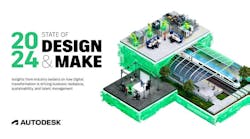The rise of Internet of Things (IoT) technology has created mass amounts of data that facilities managers can collect from their properties and use to improve their operations and maintenance plans. IoT sensors can be fitted on a multitude of building systems— including HVAC, energy, lighting, access control, irrigation, and occupancy—allowing devices to “talk” to building operators through smart building management platforms.
Building managers who can collectively store and access data will gain the deepest insights and the most significant benefits. However, not every device or application speaks the same language, whether it be Modbus, BACnet, or something else. The proliferation of IoT sensors and applications from different vendors using different communication protocols has led to information silos within building management systems (BMS). Additional infrastructure is needed to streamline communications and centralize data into one convenient interface for interoperability.
Talking the same language
An independent data layer (IDL) functions as middleware IT infrastructure that is brand agnostic to standardize data from all devices and graphic applications regardless of vendor. This way, building managers can simultaneously query two or more data streams—say, from your building automation system (BAS) and lighting system—in the same place.
Furthermore, an IDL serves as a way to organize data, to allow users to work at a higher level. Within the IDL, data is modeled and labeled, and relationships between entities are mapped, normalizing various elements and their connections. For example, you might have several types of occupancy sensors, including ones from your BAS, your lighting system, and an IoT device. Each input might differ: Sensors may have different names, such as "OCC-1" or "Conf Room Occupancy," and speak different protocols.
The IDL unifies all occupancy sensor data into your database and serves it up in a standardized manner. An IDL query can allow logic or analytics to occur at an even higher level. For instance, an engineer can ask the system, “Tell me the status of all the occupancy sensors in the large conference room: Is it occupied?” This integration gives building managers a single source of truth for building systems data, analytics, and solutions across your entire portfolio.
Scalability and future-proofing
The ability to create various interfaces or “views” is especially beneficial to organizations that want to leverage building data in multiple ways for different purposes. Because an IDL is inherently agnostic, it can send data to other enterprise platforms through a single API rather than requiring different connectors and a lot of development time in efforts to understand and manipulate data streaming in from IoT sensors and third-party applications.
For example, those only wanting to pull information for ESG initiatives or for building maintenance can do so through the IDL. By allowing other analytics tools and platforms to pull data as you continue to onboard and replace systems, the IDL creates a robust solution to consolidate your enterprise BMS to keep you moving forward.
Avoiding vendor lock-in
An IDL also reduces dependence on one vendor. Instead of feeling stuck with one language and one data model, building managers, through an IDL, can harness a single source of truth in which data is all modeled in a common way so that the set becomes portable when looking to change vendors or try something new. In this way, an IDL resembles an app store.
Interest is burgeoning in the industry to align ontologies to streamline the normalization of building data, including supporting and extending existing building modeling standards, such as Project Haystack and Brick. A data model for a growing list of systems within the built environment is foundational for improving building management and operations. Owners are becoming more informed of the risks of vendor lock-in and wishing to pursue a more flexible path, including selecting multiple vendors to fulfill their desired capabilities. A data standard could allow building operators to trust that their building automation systems are open, interoperable, and easily updated as their buildings evolve. This results in easier commissioning, more reliable troubleshooting, and true consistency of data and reporting across a building portfolio.
An IDL could also be useful as a product itself for companies developing their own building integration tools or user interfaces requiring commonly readable data. In this application, an IDL delivers excellent value to end users by providing the flexibility to perform simple API queries and build their charts as they wish in order to customize and manipulate data.
As we’ve become awash in data, building owners have woken up to the need for agnostic, unified information. The value of having increased flexibility in vendor choice expounds as companies scale and enter different geographies, and as entities such as higher education institutions, airports, and hospitals roll out additional IoT phases.
Working with a trusted building and control integrator can be a significant first step in opening data access and unlocking potential in your portfolio.
For more news, projects, and profiles in the smart buildings ecosystem, subscribe to the SBT newsletter and follow us on LinkedIn, Twitter, and Facebook.




